Conversion in Retail: The Guide to Performance Measurement and Optimization
Brand awareness and sales are two sides of the same coin in retail, linked by a common denominator - conversions. We have compiled the ultimate guide to 'conversions in retail' for you, in order to better highlight how and why video analytics plays an important role in the domain.
Published
January 10, 2024
.avif)
Introduction
What is conversion in retail?
Conversion in retail refers to the act of buying, i.e, when a choice 'converts' into a purchase. The most important objective of retail, conversions are highly sought-after and can be studied, measured, and assessed to boost business.
Moving onto conversion rate, conversion rate is the percentage of customers who make a purchase. Online and offline stores both measure conversion rate, in order to evaluate the efficacy of their sales and marketing initiatives. Needless to say, a higher conversion rate is indication of a more successful business.
How to Calculate Conversion Rate?
Retailers can calculate the conversion rate by dividing the number of transactions by the number of visitors during a specific time period, such as a day, week, or month. The number of visitors, also referred to as footfall, can be obtained manually with tally counters or automatically via sensors or video-analytics.
The number of transactions can be obtained from the Point of Sales (PoS) system.

The different stages of a Conversion in Retail

The different stages of a conversion in retail, as visualized above, is a five-step funnel. It starts with awareness, that needs to translate into active interest for a successful conversion. Interest is followed by desire, which should encompass the condition of filling a gap in the market, i.e, fulfill the target market's pain points. Finally, we reach the final stages of conversion and re-engagement, the latter indicating that the customer is satisfied with their purchase.
What is the relation between conversion rate and footfall?
The conversion rate and footfall are closely related in retail. Footfall refers to the number of people who visit a physical store, while conversion rate refers to the percentage of those visitors who make a purchase.
The higher the footfall, the greater the potential for sales, but this does not always translate to a higher conversion rate. In other words, while a high number of visitors may be a good thing for a store, if they are not making purchases, then the store's sales will not increase. On the other hand, a store with a lower footfall may have a higher conversion rate if the store is doing a good job of engaging customers and persuading them to make a purchase.
In order to maximize sales, retailers should aim to increase both footfall and conversion rate.
What is conversion rate optimization (CRO)?
Conversion Rate Optimization (CRO) in retail stores or shopping malls refers to the process of improving the percentage of visitors who enter the facility and make a purchase. To optimize the conversion rate it needs to be measured. With the data at hand, strategies to encourage purchasing behaviour, hence profit can be implemented.
Conversion Rate Optimization (CRO) is measured by tracking and analyzing key performance indicators (KPIs) related to the desired actions or goals.
Sales Conversion Rate: The conversion rate calculates the percentage of store visitors who make a purchase. It is derived by dividing the number of transactions by the total number of store visitors (footfall) and multiplying by 100. A higher sales conversion rate indicates better customer engagement and a higher likelihood of turning visitors into customers.
To optimize the conversion of visitors into buyers additional metrics can be collected:
Average Transaction Value (ATV): ATV measures the average amount spent by customers per transaction. Increasing ATV suggests that customers are making larger purchases, which can lead to higher revenue and profitability.
How to optimize the conversion rate?
To optimize conversion rate in retail, retailers can implement the following strategies:
- Improve the store layout and merchandising: The store layout should be visually appealing, easy to navigate, and designed to encourage customers to explore and make purchases. Merchandise should be displayed strategically to showcase the products in the best light.
- Train and motivate the sales staff: The sales staff should be knowledgeable, friendly, and engaging. They should be able to answer customers' questions, provide recommendations, and help customers find what they are looking for.
- Offer promotions and discounts: Offering promotions and discounts can encourage customers to make a purchase, especially if they feel like they are getting a good deal.
- Provide exceptional customer service: Providing exceptional customer service can help create a positive shopping experience and build customer loyalty. Retailers should make sure their employees are trained to provide top-notch customer service.
- Use technology to enhance the shopping experience: Retailers can use technology such as interactive displays, mobile apps, and augmented reality to enhance the shopping experience and make it more engaging for customers.
- Customer Intelligence: By deeply understanding the customer, the store experience, service and product offerings can be improved. Surveys, experiments and sales analysis are common strategies to gain better customer intelligence.
How does Video Analytics impact Conversion in Retail?
Occupancy Measurement
Video analytics can be measured to measure and assess the occupancy of a store, i.e, the number of people physically present in it. Occupancy measurement is a KPI that is determined by footfall.
Footfall is a very important metric for retail, and acts as the foundation of determining business factors such as sales, the ROI on marketing, total revenue, etc. Footfall and conversion rate are directly related to each other. Footfall is the number of people who visit a physical store or location, while the conversion rate is the percentage of visitors who make a purchase or take some other desired action.

When footfall increases, there is usually a corresponding increase in the number of potential customers who can be targeted for conversion. However, it's important to note that simply increasing footfall does not necessarily mean that the conversion rate will also increase.
Key Metrics in Footfall Measurement
- Total foot traffic - Total foot traffic is a metric that is used to determine the total number of people who enter a specific area (for example a retail store) within a predefined period of time. This could be a day, a week, or a month.
- Conversion rate - A conversion rate figure is the percentage of visitors in a store who make a purchase. It is a key performance indicator (KPI) that helps retailers measure the effectiveness of their brick-and-mortar stores in converting potential customers into paying ones. A higher conversion rate indicates that the store is successful in attracting and engaging customers, and is likely to generate more revenue.
- Dwell time - Dwell time goes hand in hand with the analysis of foot traffic and is a commonly used term in the field of retail or transportation referring to the amount of time an individual spends in a specific location or area. Dwell time reveals valuable insights into human behavior and can help business owners understand the efficacy of factors like infrastructure, product placement, and space utilization.
- Bounce rate - Bounce rate is a term meant to denote visitors who enter the specified location, take no action, and leave after spending a short amount of time in the area. By assessing the bounce rate, businesses can identify and detect problems and come up with ways to minimize it. For example, if a certain section of the demographic has higher bounce rates, it is an indication that the product/service is not efficiently targeted towards them.
- Repeat visitors - The regular assessment of foot traffic is a good way to identify the number of repeat visitors, i.e. the people who visit the same store again and again. Repeat visitors are good assessors of business performance, and can help users figure out ways to enhance and sustain customer relationships.
Retailers video analytics to determine peak shopping times - during the day, week, or month and also according to season and holiday rubrics. By doing this, they can ensure that they are able to concentrate their marketing efforts during periods of high demand.
Interested in learning more about how footfall impacts retail? Read Isarsoft's guide to footfall in retail here.
Queue Management
The retail industry is centered around attracting customers, and thereby involves high volumes of foot traffic on a regular basis. A good way of boosting business is to always ensure that the customer experience is optimal, smooth, and free of unwanted eventualities. Which brings us to our next point - queue management to reduce waiting times, and how it impacts the shopping journey of a customer.
Video analytics is used to monitor the POS (point-of-sale) stations in retail stores. This is done in order to regulate the processing and check-out times, in addition to ensuring that the queue does not become too long at any point.
A Queue Management System (QMS) is a system to automatically manage queues whilst monitoring and optimizing people or vehicle flow.
.jpg)
A QMS measures the length of the queue and estimates the dwell or waiting time. Through digital signs and displays people can be guided to free slots or obtain information about the estimated waiting time. Some QMS include ticketing or queue number systems to aid the processing and monitoring. QMS without ticketing or queue number systems typically rely on sensors, video analytics or employee oversight to assess queue length.
QMS can be integrated with other systems such as appointment scheduling, customer feedback, and data analytics to provide insights and metrics to optimize their operations and improve the customer experience.
Product Placement
Product placement and store navigation are two very important aspects of the customer journey. Take, for example, your local supermarket. It is carefully planned - from start to finish, with the sole objective of boosting conversions through the location and order of product placement, as well as how an average customer would navigate their way from the entrance till the check-out counters.
Retailers can use video analytics to study customer behavior - how they interact with the products, preferred routes through the store, which placement blueprint performs best for overall sales, etc. Are there sections that are more frequently visited than others? Does placing two store favorites in close proximity enhance cross-selling opportunities? How can product placement be leveraged to maximize holiday sales? The answers to all the questions can be obtained through collecting and processing video data constantly.
Read the Isarsoft Perception to boosting CX for retail customers here.
Customer Flow Analysis
Customer flow is the movement of customers from the beginning till the end of the process, i.e, entering the premises of a retail store until the completion of desired action(s) and consequent exit.
Video analytics can be used to monitor the customer flow at all points in time, and help users better understand how customers move within the space - and whether or not the space supports free, quick movement. This includes identifying potential bottlenecks, incorrectly spaced aisles, and the needs of different groups of customers. Our heat maps can be used to visualize video data in the context of path, position, velocity, and dwell time.
Isarsoft's software solution can also be used to identify peak times of day - and ensure that the store is prepared to deal with a rise in number of customers. This could result in extra staff deployment, opening up additional entry/exit points, and making multiple cash registers operational.
Video Tutorials
This video displays exactly how Isarsoft Perception can be used to measure customer interactions and improve CX. The video depicts a shelf in a shop, and uses video analytics to measure the customer interaction first (browsing and selection), and then the definitive action that signifies a success (purchase). Isarsoft Perception identifies and detects each customer, and informs the user of the time he or she takes to interact, and then, act. Customer engagement can be studied to boost the conversion rate.
By performing this process, retailers can evaluate the efficacy of their business model and decisions.
This video is an examination of the POS stations at a supermarket, and how Isarsoft Perception can be used to measure and analyze the flow of customers, and regulate the flow and movement of multiple queues.
More about Isarsoft
With Isarsoft Perception, your camera systems become part of your business intelligence. Whether the goal is to increase efficiency, customer satisfaction or safety, Isarsoft Perception provides the insights needed for informed decisions.
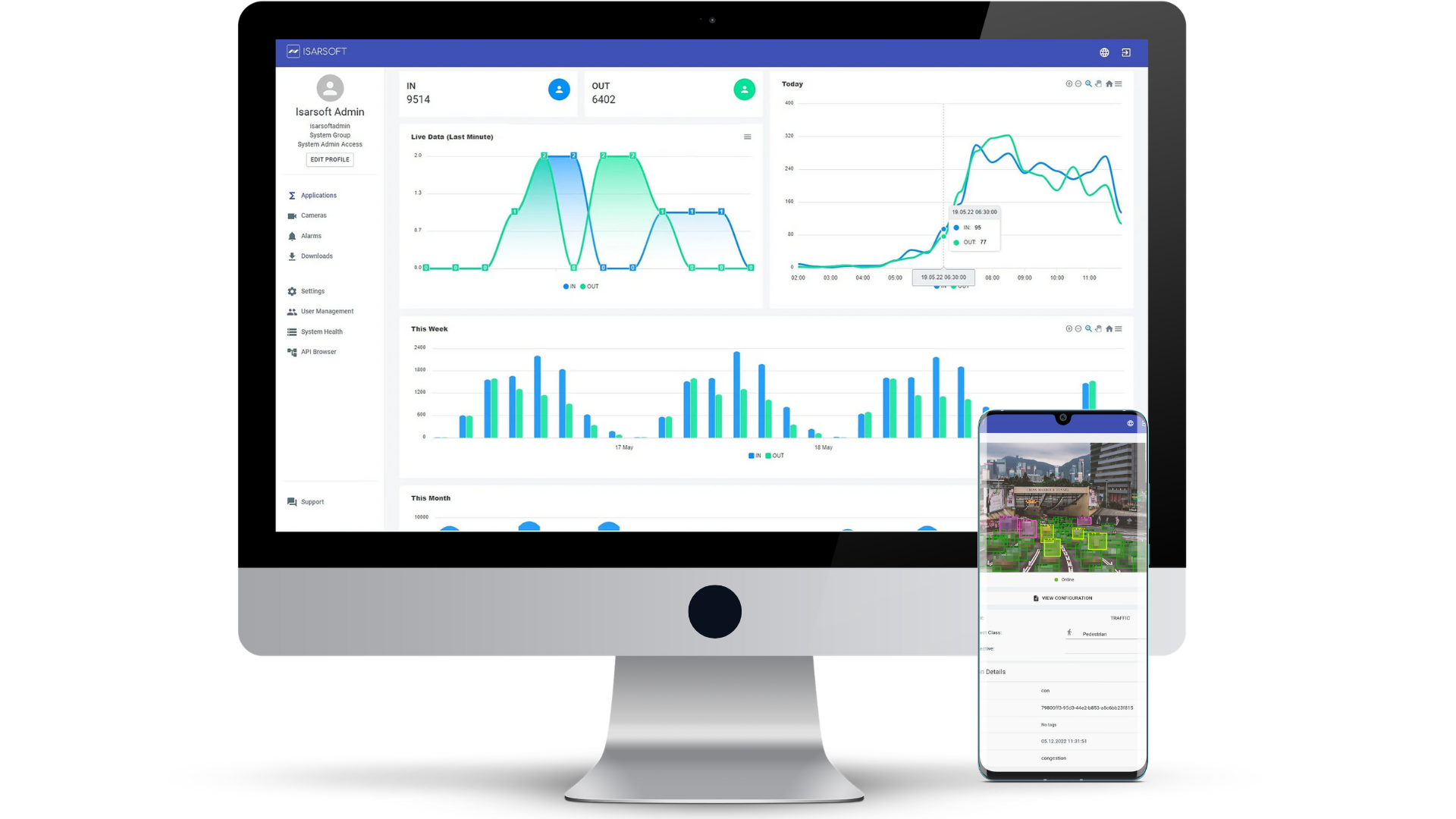
Contact us, to learn more about how to turn security cameras into intelligent sensors.
References
Optimize your business processes.
Improve business processes with video-based business intelligence from Isarsoft.
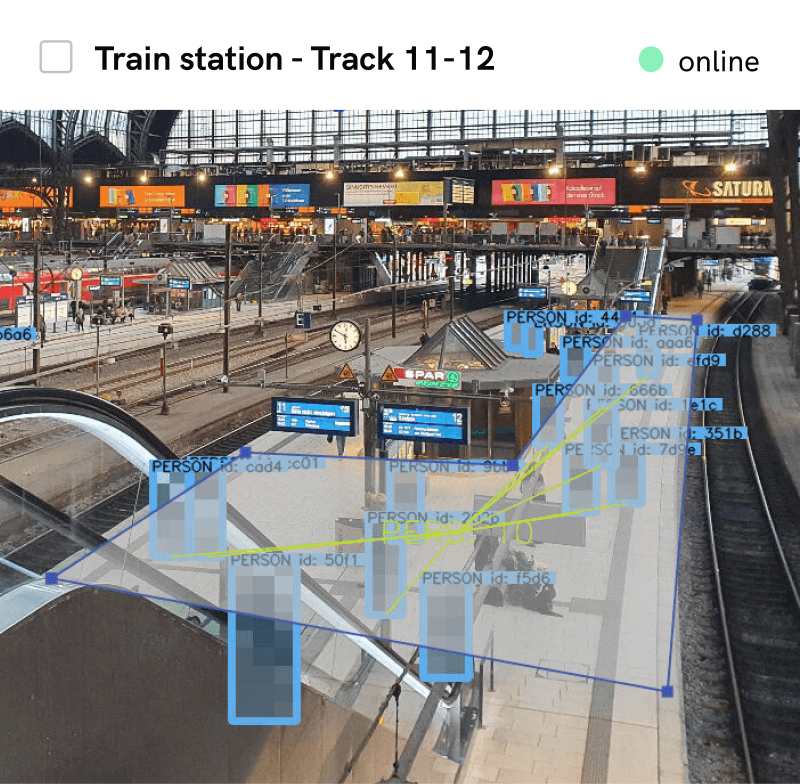

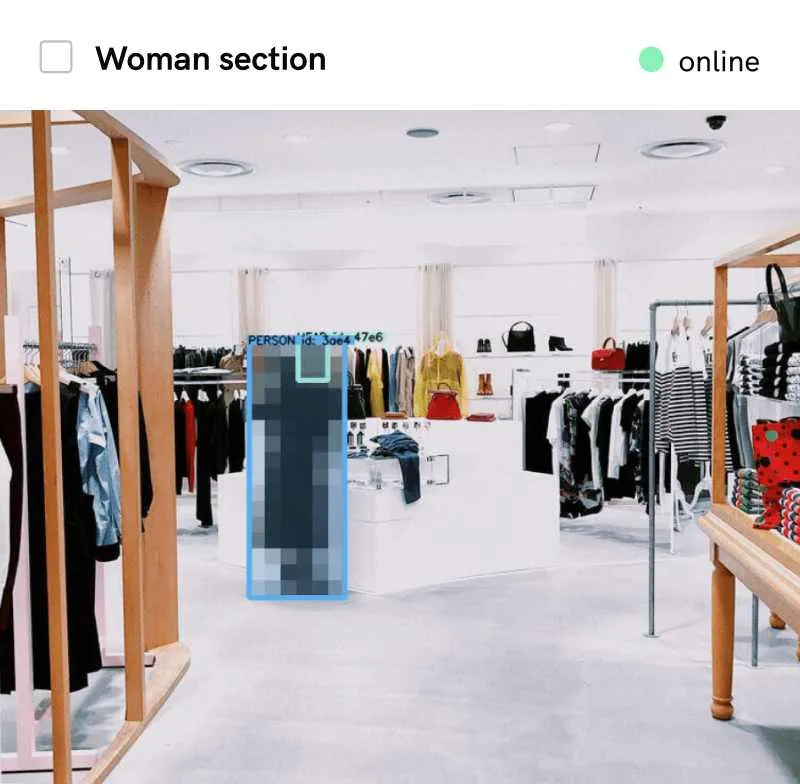
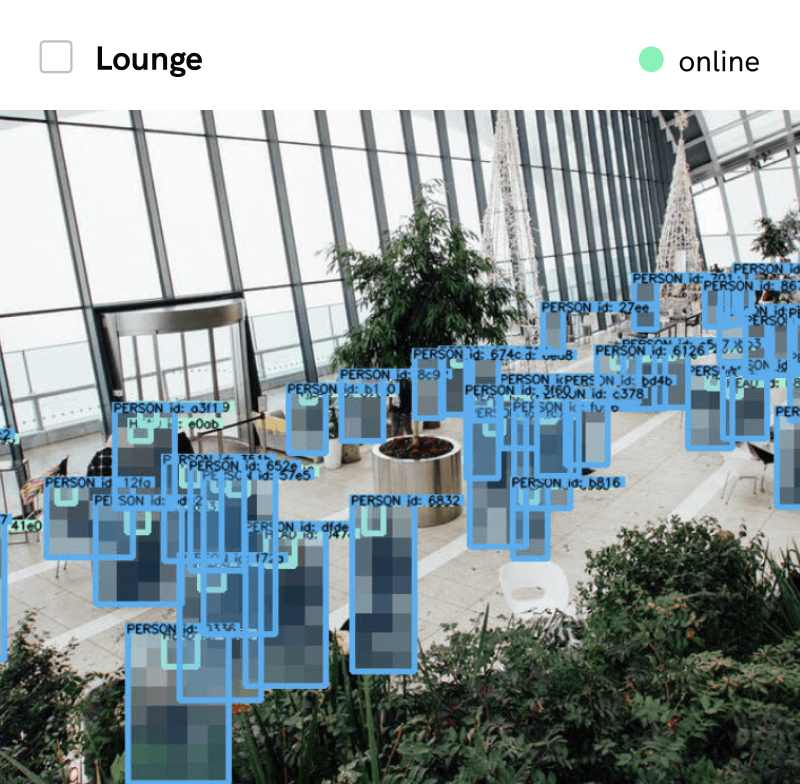
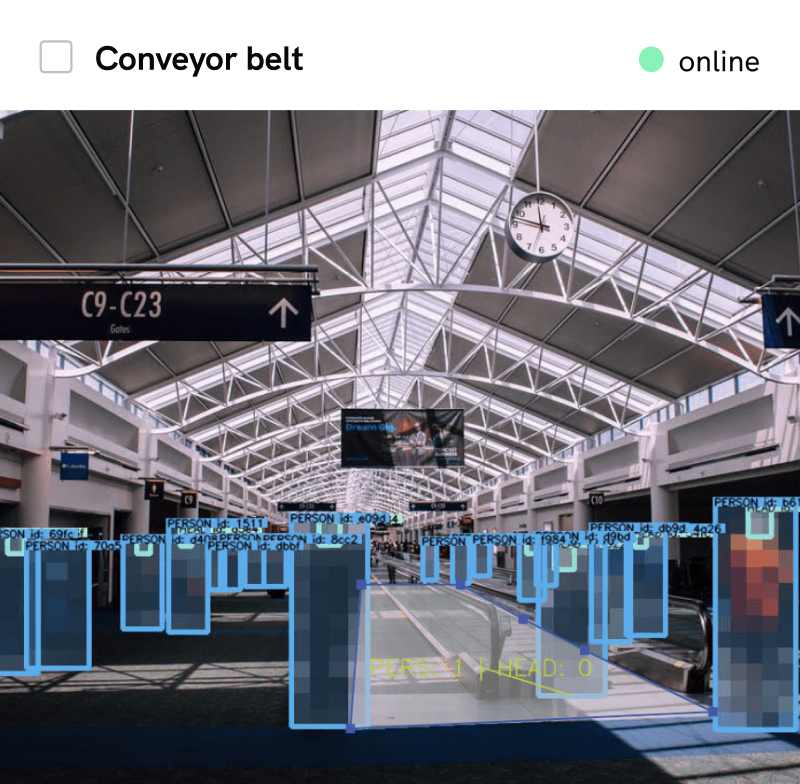




.webp)